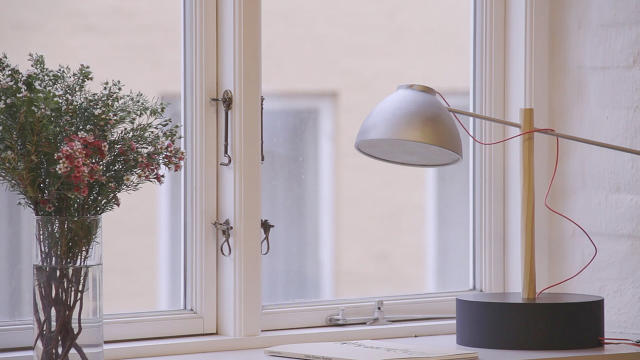What if your furniture had a day job, just like you? What if, when it wasn't being used, it worked to bring in money to pay for your quality-of-life upgrades? That's the idea behind the Aspirational Lamp, a Luxo Jr. style lamp that imagines a future in which the dumb objects around us have almost Pixar-like inner lives.
The Aspirational Lamp is an AI-controlled desk lamp that doesn't just use electricity, but can collect it, thanks to a built-in solar panel and battery pack. Created by Feild Craddock, Akshay Verma, and Michael-Owen Liston, it's designed to explore a speculative scenario in which our appliances have intelligence, goals, and—most importantly—the means to act on those goals. When the lamp isn't being used, it will soak up electricity, which it can then (theoretically) sell back to the power grid. With the money made from that, the Aspirational Lamp is then capable of investing automatically into the stock market, earning itself enough money over time to pay for upgrades and new parts for itself. You can cash your lamp out at any time, however, and if the lamp totally breaks, a check for the lamp's remaining funds would be automatically mailed to the owner.
The Aspirational Lamp came out of the Secret Life of Objects, a two-week course at Copenhagen Institute of Interaction Design. The course invited students to imagine a future in which the dumb objects around us look after their owners' unspoken wants and desires.
Conceptually, there are a lot of missing pieces right now to making something like the Aspirational Lamp a reality. For example, selling your electricity back to the grid can be a very complicated task; hardly the plug-and-play affair envisioned by the Aspirational Lamp. But the goal of the Aspirational Lamp isn't to explore immediate feasibility, but rather, the possibilities of living among appliances that have their own autonomous agendas.

"Smart appliances are here already, and we can expect to continue seeing them enter into many more aspects of our lives," Craddock writes by email. "There are countless things hooked up to the internet, and we can already point to examples of objects that are starting to maintain themselves, like the Amazon Dash Button."
As the Internet of Things enters its Web 2.0 phase, Craddock says the ultimate question posed by appliances like the Aspirational Lamp is, how much of our agency are we comfortable giving up?


















